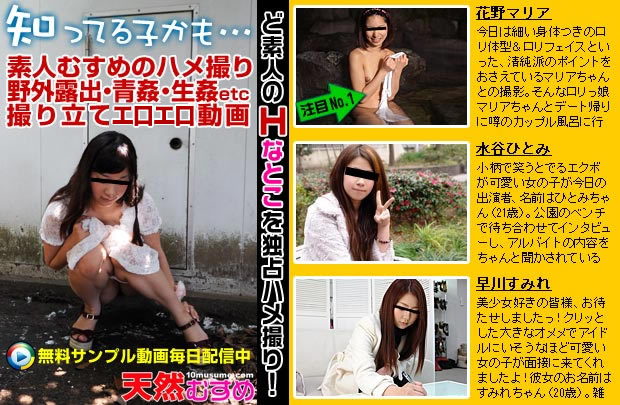���̂����݂����Y�ƉȊw�������̎R�����l������̃O���[�v���𖾂����B�ۂ̑ϐ�����h��
���Ö�̊J���ɂȂ���Ɗ��҂����B�Q�W���t�̉p�Ȋw���l�C�`���[�Ɍf�ڂ��ꂽ�B
�O���[�v�́A�ۂ̕\�ʂɂ���זE���ɁA����ٕ��ƔF�߂ĊO�ɂ͂��o�����������邽��ς�����
����̂������A���̍\�����������Ă����B����A���̂���ς����ɂ́A���������ʂ��Q��ނ���
���Ƃ�V���Ɋm���߂��B���ꂼ��ɕ����́u�����v������A���̑g�ݍ��킹�ɂ���āA���l�Ȗ��
�ٕ��Ƃ��Č��ɂ߂Ă���Ƃ����B
�R������́u�ۂ��ٕ���r�o���邵���݂̑S�e���������B�ϐ��ۂ��ł��Ȃ��悤�ȁA
���q�W�I�^�C�v�̍R���������J���������v�Ƙb���B
�\�[�X
http://www.asahi.com/science/update/1128/OSK201111280015.html
�o��̏ゾ�낤�B
�������Ď��ԉ҂��B�ł�����ł����B
���̎d�g�݂ł͂Ȃ��ϐ��\�͂ɋۂ��ˑR�ψق���Ζ��Ӗ��ɂȂ�A���{�I�����ɂȂ��ĂȂ�
���̎d�g�݂ł͂Ȃ��ϐ��\�͂ɋۂ��ˑR�ψق���Ζ��Ӗ��ɂȂ�A���{�I�����ɂȂ��ĂȂ�
���̎d�g�݂ł͂Ȃ��ϐ��\�͂ɋۂ��ˑR�ψق���Ζ��Ӗ��ɂȂ�A���{�I�����ɂȂ��ĂȂ�
���̎d�g�݂ł͂Ȃ��ϐ��\�͂ɋۂ��ˑR�ψق���Ζ��Ӗ��ɂȂ�A���{�I�����ɂȂ��ĂȂ�
���̎d�g�݂ł͂Ȃ��ϐ��\�͂ɋۂ��ˑR�ψق���Ζ��Ӗ��ɂȂ�A���{�I�����ɂȂ��ĂȂ�
���̎d�g�݂ł͂Ȃ��ϐ��\�͂ɋۂ��ˑR�ψق���Ζ��Ӗ��ɂȂ�A���{�I�����ɂȂ��ĂȂ�
�؍��l�͓��{�l�̂��������Ƃ�������K����
�|�\�����͓���ĂȂ��ł�
��A�O�\�N�ォ
����͐l�ނ�łڂ��Z�p�ɂ��]�p�ł���
�n��
���C�g������������
���ߋ��ɗ��_��ŋ��������R������
��������
�ߋ��Ɂy���̎��_�Łz���_��ŋ��������R������
�Ȃ�s�v�c�͂Ȃ�����H
���_���m�����i���E����������
���ǂ��Ȃ�̂�
���{�I�������ĂȂH
����������₵�ɂ��ăE�C���X�̐i�����~�߂鎖���H
�ǂ�����Ă���Ȏd�g�݊l��������
���͂��̌�Ȃ��c�B���߂Ȃ̂�������Ȃ��B
�Ђ���Ƃ��āA��ɗ���Ȃ����R�����E���R�\�h���őP�����B
�ǂ����ɂ��Ă��A�����͂��ꂪ�őP
�b�o�t���Ȃ��̂�
�����N�����Ă����ς��ł���߂ɕψق��ł��Ă��āA�l�Ԃ��e��R�������������
�������J��Ԃ������̃j�b�`���L���I��I�ɒ��o�����B
������S�C����������ǂ�
�ˑR�ψقł��ꔭ�ł������܂��Y��ɐ������悤�ɂȂ��
�������܂Ŕ���\�͊l������܂ł̐���͂ǂ����Ă���
�������������ɂȂ��Ă�B�������B
�ł��A�C�^�`�S�b�R�I������琻���Ѝ����Ȃ���
�������150�~�����N�[�|�����Ƃ��Ă������p�ł��܂��i���p�z�����Ȃ��j�B
���L�̃T�C�g�ł����p�ł��܂��B
http://www.bk1.jp/
�����̂����ڂɊ��ӂ��ās150�~�M�t�g���t�v���[���g�I�i11/30�܂Łj
����������������������������������������������������������������������
�����̈��ڂɊ��ӂ̋C���������߂܂���
150�~���̃M�t�g���������グ�܂��B
�� �M�t�g���R�[�h�@cc111c01d21tqxb3�i���x�����ɃN�[�|�����p��I���������j
�y�V��AMAZON�ƈႢ�R���r�j�㕥���i�萔�������j���I���ł��܂��B
150�~�ȉ��̖{�͊y�V�̈ȉ��̃����N�Ō������ʂ��o�܂��B
http://search.books.rakuten.co.jp/bksearch/nm?sv=30&h=100&o=0&g=000&v=2&s=4&e=1&cy=0&b=1&sitem=%CB%DC&f=A&nitem=
���������������
�i�����Ă̂́A���Ȃ炸����������̂Ȃ�B
�����āA�E�B���X�̐i���Ɛ�����̑��x�́A�l�ԂƔ�r�ɂȂ�Ȃ��B
�Ⴆ��Ȃ�A�f���̐l��VS�W�F�b�g�퓬�@���B
������A�l�Ԃ̓E�B���X�̐i���ɂ˂ɒx������A�ғł̕a���ۂ����s���邽�тɁA
��ʂ̎��҂��o���Ă悤�₭�E�B���X�ɓK���ł���悤�ɂȂ����B
�����A�ߔN���̃E�B���X�̐i���̑��x�ɑΉ��ł��镐���l�ނ͎�ɓ��ꂽ�B
���ꂪ�u��w�v�ł���u�R�������v�ł���A�u�i���v�̑���Ɏ�ɓ��ꂽ�u�i���v���B
���̂Ƃ���A�l�Ԃ̋Z�p�̐i���́A�E�B���X�̐i�������u�����v�B
�����������珫���A�܂������a�C�ɂ�����Ȃ��̂���ɓ���邩�������B
�ǂ����낤�ȁB
�����Ƃ͊��ɃC�^�`�������ɔ���
������(��)���������Ă��܂����Ƃ�������邩��
���������Ƃ���͒ɂ����y�����Ȃ����낤���A
���̃^���p�N�����U���������J�����Ă�
����ς�ψقőR���ăC�^�`�������͑����Ǝv����B
>>4��FA���ȁB
���̃^���p�N�����U�����闘�_�́A
����܂őϐ����o�Ďg���Ȃ��Ȃ����܂��g����悤�ɂȂ鎖�ƁA
��̗ʂ����Ȃ��Ă������悤�ɂȂ鎖�ŕ���p�̃��X�N�����点�鎖�B
http://www.nikkei.com/tech/trend/article/g=96958A9C93819595E2EBE2E0E38DE3E4E3E0E0E2E3E2E2E2E2E2E2E2;p=9694E3E7E3E0E0E2E2EBE0E2E3E2
���A���ܑϐ��ۂւ̎d�g�݉𖾁@����ς������ٕ��r�o
ttp://www.nikkei.com/news/category/article/g=96958A9C93819595E0E7E2E0E48DE0E5E3E3E0E2E3E386989FE2E2E2
�@�������͍̂ۂ���܂��ٕ��Ƃ��ĔF�����čזE�̊O�ɔr�o����d�g�݁B�זE�\�ʂɂ���
����ς������r�o���邱�Ƃ͒m���Ă������A�Ȃ��l�X�Ȗ�ɑΉ��ł���̂��͕������Ă��Ȃ������B
�@�R�������ƒ����lj�E������́A��^���ˌ��{�݁u�X�v�����O�W�v���g���A�J�M�ƂȂ邽��ς�����
�\�����ڂ������ׂ��B���̂���ς����͖�܂�傫�ȕ��q�Ə����ȕ��q�ɕ����A�����̕�����
�������邱�Ƃňٕ��Ƃ��ĔF���A�r�o���Ă����B
�@��܂ƌ������镔�������������邽�߁A�l�X�Ȏ�ނ̖�܂�F�����A�ϐ������悤�ɂȂ��
�݂Ă���B��܂ƌ������镔���ɂӂ������鉻������������A���ܑϐ��ۂ����ʓI�ɋۂ���
�V��ɂȂ�\��������Ƃ��Ă���B
���ł�>>4�݂����ȕψق����傱���傱�o�Ă���킯�����
�i�ʂɐV��J����������^�C�~���O�ǂ��o�Ă����ł͂Ȃ��B��ɐ���ł���͂��j
������ĂȂ�ŏ����Ă�����
�i���_�I�ɂ͕K�v�Ȃ��@�\�͓�������Ă��܂��V�X�e���ɂȂ��Ă�́H
���ꂤ�܂��g���R���g���[���ł����肵�Ȃ��̂���
�f�l�l��������
�����l������
���C�o�����ǂ�ǂ�ł�������䓪���Ă���i�G�T�����j���čl�����Ȃ�
���ȑ��B�����炻��ōςނ��Ă��Ƃ�
���ǃ��C�o���|�����@�������Əo�Ă��Ȃ�����R���g���[���͖����Ƃ�����
������Ă�̂����ꂩ
�ێ��g���ψق��邾���łȂ��쐶�����菕������炵���B
�ϐ����������F�R���������̒��Ԃ���銰��ȑϐ���
http://www.natureasia.com/japan/nature/updates/index.php?i=79540
Ryosuke Nakashima,
Keisuke Sakurai,
Seiji Yamasaki,
Kunihiko Nishino
& Akihito Yamaguchi
http://www.nature.com/nature/journal/vaop/ncurrent/full/nature10641.html
Figure 1: Crystal structure of the rifampicin-bound AcrB trimer.
http://www.nature.com/nature/journal/vaop/ncurrent/images/nature10641-f1.2.jpg
The three AcrB monomers are shown in blue, red and green to indicate the binding, extrusion and
access monomers, respectively. This colour scheme is used in all the figures. a, Entire structure
of the AcrB trimer with rifampicin viewed from the side and parallel to the membrane plane. The
difference Fourier map (Fdrug − Ffree) of bound rifampicin is depicted by an orange mesh, contoured
at 4.0��. b, Cutaway view of the head piece of the AcrB trimer from the distal side of the cell. c,
Close-up view of the rifampicin-binding site. Carbon atoms of rifampicin and AcrB are shown in
magenta and green, respectively. Nitrogen, oxygen and sulphur atoms are shown in blue, red and
yellow, respectively. Hydrogen bonds are indicated by dotted lines.
Figure 2: Crystal structure of the erythromycin-binding site of AcrB with a bound erythromycin molecule.
http://www.nature.com/nature/journal/vaop/ncurrent/images/nature10641-f2.2.jpg
Carbon atoms of erythromycin are shown in yellow. The other colours indicate the same as in Fig. 1c.
a, Close-up view of the erythromycin-binding site. Bound erythromycin is shown in yellow, and the
difference Fourier map with positive peaks (orange mesh, contoured at 3.0��) and negative peaks
(cyan mesh, contoured at −3.5��) is shown. b, Overlapping structures of rifampicin and erythromycin
at the binding site of AcrB. c, Erythromycin binding site of AcrB with a bound erythromycin molecule.
Hydrogen bonds are indicated by dotted lines.
Figure 3: Structure of the AcrB trimer with simultaneously bound rifampicin and minocycline.
http://www.nature.com/nature/journal/vaop/ncurrent/images/nature10641-f3.2.jpg
a, Side view of AcrB with a difference Fourier map of bound rifampicin in the access monomer and
minocycline in the binding monomer, which is depicted by a cyan mesh, contoured at 4.0��. b,
Horizontal cutaway view of AcrB. Rifampicin and minocycline are shown in magenta and cyan,
respectively, using stick representations, and the Phe-617 loops are shown in red.
Figure 4: Effect of site-directed mutagenesis in the two binding pockets and putative intramolecular channels.
http://www.nature.com/nature/journal/vaop/ncurrent/images/nature10641-f4.2.jpg
a, Close-up view of the erythromycin-binding site with mutated amino-acid residues indicated by blue
sticks. The branched intramolecular channels are outlined in black, the Phe-617 loop (Gly 614–Gly 621)
is shown in red and bound erythromycin is shown in yellow. For clarity, some residues have been
removed from the foreground. b, Growth of mutant-AcrB-expressing E. coli cells in the presence of
32 ��g ml−1 erythromycin. c–e, Quenching of doxorubicin fluorescence as a result of doxorubicin
accumulation in intact mutant-AcrB-expressing E. coli cells: competitive inhibition of doxorubicin
export by various drugs (MINO, minocycline; EM, erythromycin; RF, rifampicin; KM, kanamycin) (c);
effect of AcrB mutations on doxorubicin export (d); effect of erythromycin on doxorubicin export by
mutant AcrB (e). a.u., arbitrary units.
x
http://www.nature.com/nature/journal/vaop/ncurrent/images/nature10641-f5.2.jpg
a, Side view of the AcrB trimer with intramolecular channels and bound drugs. The channels are shown
as coloured solid surfaces and were calculated using the program CAVER29; the channels include the
proximal binding pocket (light green), the distal binding pocket (light pink) and the exit funnel (light yellow).
Three channels are labelled, and bound drugs are shown in the CPK representation (rifampicin in magenta
and minocycline in cyan). The framework of the central cavity and membrane surface is indicated by solid
lines. b, Peristaltic drug transport mechanism of AcrB, with channels labelled as in a. The drugs are
transported from a proximal pocket to a distal pocket by peristaltic motion that results from a
conformational change from the access state to the binding state.
��ܑϐ���͔̂R������B
��ܑϐ��p�̃^���p�N�����킴�킴���Ȃ��Ƃ����Ȃ����A
���̃^���p�N�����@�\������̂ɂ�ATP��v���g���Z�x���z�Ȃǂ̃G�l���M�[���K�v���B
�������A���̏�ɂȂ�������A������ĊہX���ʂ���H
��ܑϐ��������Ȃ��A���̕����A�^���p�N����]���ɍ��Ȃ����A�������B�o����B
���ʁA���̏�ɂȂ��������ܑϐ��̂Ȃ������ϐ��̂���z���쒀���Ă��܂��B
�����瑽�ܑϐ��ۂ͖�ɂ悭�N�������ł����������Ȃ��B�a�@�Ƃ��ȁB
�����������͓̂��Ă��Ă��Ƃ̃^���p�N���̐��\�������Ă��܂����������B
����ɂ���Ė�̂Ȃ����ł͑ϐ��̂Ȃ��A���Ƃ̐��������ɕ�����B
���̂����ǂ�Ƃǂ�ɑϐ����L�邩��f�����m�邱�Ƃ��o����悤�Ȏ���
�o����Ȃ�A���̐l���ƂɎ��X�ɏ���g�݂��킹�̂悤�ɕς��ē��^�ł��Ȃ����ȁH
�f�l�̑z�������ǁE�E�E
���R�ψق������ق������ł���H�@��
�킩��₷���B
�ϐ��ۂ����ɂȂ�͉̂@���������傾�ˁB
>>51
�ق��Ă���w����
100��ނ��Ȃ����A�ۂ����ɑϐ������邩���ׂ�L�b�g�͂���B
���A����ł�����Ȃ�Ɏ��Ԃ�������B
�����ۂ���肵����A���҂�����o���Ă�����x���₳�Ȃ��Ƒʖڂ����ȁB
�A�����J�ł́A����Ȃ̗I���ɒ��ׂĂ�ԂɊ��҂����ʂ��Ă�ŁA
�ϐ��ׂ�O�ɂ܂��A�莝���̂�����R���܂����^����炵����w
�ŁA�ϐ���������������������^�֎~�ɂ��Ă����Ƃ��B
����ł͑��z�̐ŋ��Ō������Ȃ���A���^�[�����܂�łȂ��B
�咰�ۂɂ������ĂȂ����炾�������͂悭�킩���B�����h���Ј������̏����\�͂̂͂�������ȁB�܂ӂ���H
���낢�뉞�p�ł����������B
�q�g�̍זE�ɂ����݂��Ă��āA����זE�Ȃ��Ƃ��ꂪ�ψق����葝�Y�����
�R����܂ւ̑ϐ�����������������ˁB
> �n��
�@��
���̔����őϐ��ۂɗL���Ȗ�܊J���ɐ���������m�[�x���܊m���B
���{�I�ȉ�����������
����������ۂɑ��āA���̈�����F�����čU��������@�����Ȃ��B
��������ɑϐ�����ɂ́A���������Ȃ��悤�ɂ��邵�����@���Ȃ��̂ŁA�����Ȃ�����Ȃ����ŕʂɖ��Ȃ��B
�@�@/:::::::::::::::,'�@�@ {�@�@�@�@l �@ �@!�@�@�@�@�@',�@�@.l�@ ! �@ �@�@i�@�@�@ i::::::::::::::::�
�@ ,':::::::::::::::::i�@�@�@�R�A�@�@ ',�@�@ !�@�@�@�@�@ i�@ l,'�@� l.�@�@�@l�@�@�@ l:::::::::::::::::::',
�@,':::::::::::::::::::l�@�@�@�@i �_�@ �` �A�R.�@ l.�@�@ l�@/! / �Y�Q ./ �@ �@�@!:::::::::::::::::::l
�@!::::::::::::::::::/�_�@�@ ́P ���~ ��R.i�R�li �@ //z�����!�@/���@�@�@�@,'�R::::::::::::::::l �@�@�@�@�@
�@l:::::::::::::::�� �@ �M����/ l: : :*: :i�S�g�}l �@/�L�C : *: : }!�/�@�@ �@ / .l ',::::::::::::,'�@�@�@�@�@�@�@
.�@',::::::::::::{�@',�@�@�@�@.�`�@`�-- '�@�@�@}�^ �_ `�-- '�@/�@�@�@�@/�@/�@!::::::::/
�@�@�_:::::::',�@�R�R.�@�@�@�_ �P�P "�L�@�L�@ �@�M�@�P�P�C �@ �@ �^ ,��@ ,'::::::/
. �@ �@ �_:.:',�@ i�R`i ��@`��~.=- �@�@�@�@i�@ �@�@�@�@ ��... - ''�@�^�@!�@,'::�^
�@�@�@�@�@ �S� ,' ́R�R�P i�R��@�@�@ �@ �]-�] �@�@�@�^ �V�@ �^� �@ l�@' �L
�@�@�@�@�@�@�@/�q�L:.i� �S��@l�@�@l` �] - ... __ ... � �L:.�^��-'' ./ �n�@ l
�@�@�@�@�@ �^�@ ',:.:�R�R l �@l�@�@l:.:.:.:.l �@�@�^:.:.:�^�@�@�@�@, '�@�@�@�R.�R�A
�@�@ �@ �^�@�@�@ �r:.:.:.�S l �@', �@�R:.:.� �^:.:.:�^�@�@�@�@�^ �@�@�@�@�@�_�_
.�@�@�^�@�@�@�@ .�:.:.:.:.:.:�M! �@',�@�@ �R/:.:.:�^�@�@�@�@�^�@/�@�@�@�@�@ _ .. �R,�R�
. �^�@�@�@�@�@�@i:.:.:.:.:.:.`�!. �@�R�@�@ �M�^ �@ �@�@�^�@ �V�@�@, - '' �L�@i�@�Mi�@�@`�[
����������ł��A�ϐ��ۂƂ̉i���̃C�^�`�������̒���
�l�Ԃ���Ɍ��ɂ܂���Ă��̂��A����ƈ�����
���Ƃ��ł��邩���m��Ȃ����Ē��x�B
����ł����R���ۂƂ����l�m�������̂ɁA����ł��悶����Ȃ�A�ƂĂ��撣�����ƌ�����B
����[�A�ʔ����ˁB���������_���ǂނ̂́B���ۂɌ��������ĉ�͂���̂͑�ς�������������Ȃ����ǁB
�Ƃ낢�i���̑ւ��ɖƉu���W����������Ă��Ȃ��̂��H
�R�������ɗ�����Ɖu�@�\�����߂�����Ɉ�Â��i��łق���
�ƂĂ��킩��₷����
�Ȃ�قǂȁB���ɂȂ���
�����P�ɂ���a�C�Ŏ��ʂ͂��������l���A�ʂ̗��R�Ŏ��ʂ悤�ɂȂ邾���Ȃ��
�o���܂��Ă鍑������낤��
�y�j�V�����Ȃǂ̍R��������V���ɔ������Ă������Ɍ����Ȃ��Ȃ���
�����ȑϐ������a���ۂ��o������ΐl�ނ͖łт邩�������
���{�I�ȉ����@��������m�[�x���܂��邩����
���[��A���̔��z�͈����Ȃ��̂����A
>>47�̃^���p�N��������悤�ɁA�Ɖu�@�\�̓R�X�g��������Ƀ��X�N�������B
�Ⴆ��Ȃ�A�ꍑ�̍���������ԌR���ɒ���������A
�����⋳��A�o�ϐ���Ȃǂɂ܂킷�\�Z������Ȃ��Ȃ����Ⴄ�ł���H
�R�ɔ����i�Ɖu�s�S�j���N������āA�t�Ɏ����̍��i���N�j����������\��������B
�ǂ����̃\�A�M�݂������B
������A�l�Ԃ̑̓��̖Ɖu���ǂ��ɂ�������A
���N�`����������肷��ق����A�����ƈ����Ĉ��S�Ȃ̂��B
������w�������Ɣ��B���āA
�a���ۂ��쒀�����×p�i�m�}�V�[���݂����Ȃ̂��ł���A
���O����̌����Ƃ���A�Ɖu���S�̕a���ۑł��邩�������ˁB
�ٕ��r���̂��߂ɑ��l�Ȉٕ���F�����郆�j�b�g������B
���̋@�\�̔F���\�͂̍����������ۂɌQ�̂Ƃ��Ă̖Ɖu�\�͂������炵�Ă�
�Ȃ���̏_��ȖƉu�@�\�ڂ������Ă݂���ǂ����A�ƁB
�܂�ܖƉu��
���_�゠�蓾��̂Ȃ�A�ł����˂Ȃ�
��{�I�ɃR�X�g�Ƃ̌��ˍ����������
���G�ł��R�X�g�������i���G�j�Ȃ�O�̐��E�ł͐����Ă����Ȃ����낤����
�����������Ŏ~�܂�
�ȂA���N�e�J����
���j�ۂ̖�ܑϐ��͂��������̂���Ȃ��A�����������ĕ������x��x�`�`�`�����čR��������
���^���~�ނ܂łЂ�����ς�����Ă����n���Ȑ헪�������Ǝv���B
�R�������͂����܂ł��k�l�̌��̔�E����˂��Łu���ׂ��I�v���Ċ����̔�ѓ������
��E���u���b�N����Z�p��g�ɂ����̂��ϐ���
��������E���u���b�N���Ă������̂��߂̉��_�v�[���ɐZ������ΐ����c��Ȃ�
�n�[�g�l�̎����B�z�Ȃ狭�_���̃v�[���ɒЂ��Ă������Ԑ��������ˁH
���b�̉��w�ϐ��╪������
������₷����
���ށA��Ԃ�c��ł邹���Ŕ�E�����Ȃ��Ȃ�A�͂Â��ʼn���|�������킯�ł��ˁI
�T�E�U�[�̓��̂̔閧�Ƃ͂��������A�Ȃ����̂��c�c
����͂��Ă����A������������₷�������������B
���^���p�N�Ƃ��������Ă��ˁE�E�E�@�ǂ������H�@���q�����w����肽���Ȃ��Ă��������H
�i�m�}�V���I�ȉ��̌������ǂ����ł���ĂȂ����������B
http://kenko100.jp/news/2011/10/27/02
���̌����ŁA���������ۂ��ϐ��邩���Ɏ_�⎕�C�y�f���o���ɂ����i�����鎕���������Ȃ����ȁB
���̕��@�̈�Ԃ̖��́u�����c��v�̈ꌾ�ɂ���
���R�ɂł���ψق�҂��Ă���A���S���A���疜�A�����̐����ׂ�Ȃ�Ď�����s�\����������
�����L���O��ʂɏオ���Ă������̂��ڂɂ�����������Ȃ�

